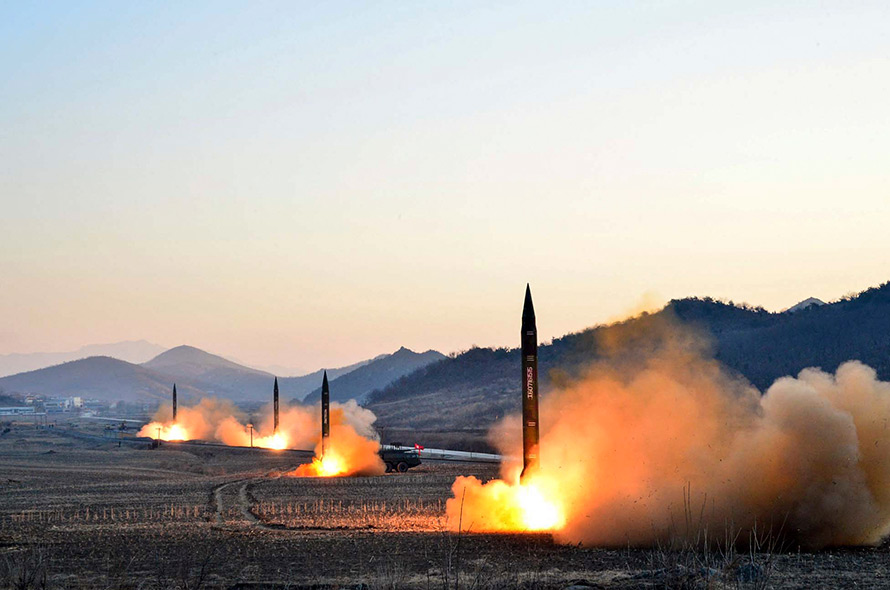
There has been an increase in tension in the Korean peninsula, following the North Korean regime’s lavish military parade last month to mark the birthday of the nation’s founder, Kim Il-sung (1912-94) and the anniversary of the foundation of its army, which coincided with the US’s announcement that it had sent an ‘armada’ to the Sea of Japan (known as the East Sea in Korea). This US show of strength was a bluff: the aircraft carrier and its escort were in fact on their way to the Indian Ocean. The war of words and threats from Donald Trump and Kim Jong-un, both declaring they are ready for a fight, has further raised the diplomatic temperature.
These flare-ups have been recurrent since the war between the North and South (1950-3) was suspended: the armistice never led to a peace treaty. Nor are threats of US military intervention new: they were made in 1969 when the Democratic People’s Republic of Korea (DPRK) shot down a US spy plane over its territory, but President Nixon concluded the risk of taking action was too high. In 1994 the option was put back on the table when North Korea first produced plutonium. The Clinton administration was ready to make a preventative strike and conflict was narrowly avoided by former US president Jimmy Carter’s surprise visit to Kim Il-sung in Pyongyang.
Trump’s keenness to end the Obama administration’s ‘strategic patience’ (diplomatic stasis combined with sanctions), which did not halt North Korea’s nuclear and ballistics progress, risks leading him into errors of judgment. All the more so since he seems not to understand the complexity of the North Korean situation, and even the most elementary historical facts. Contrary to his claim, it has never been ‘part of China’. There is also the radicalism of some of his security advisers. The threat or use of force alone will not solve the problem. Since its foundation in 1948, the DPRK has stood up to the great powers: not just the US, but also its former mentors, China (...)




